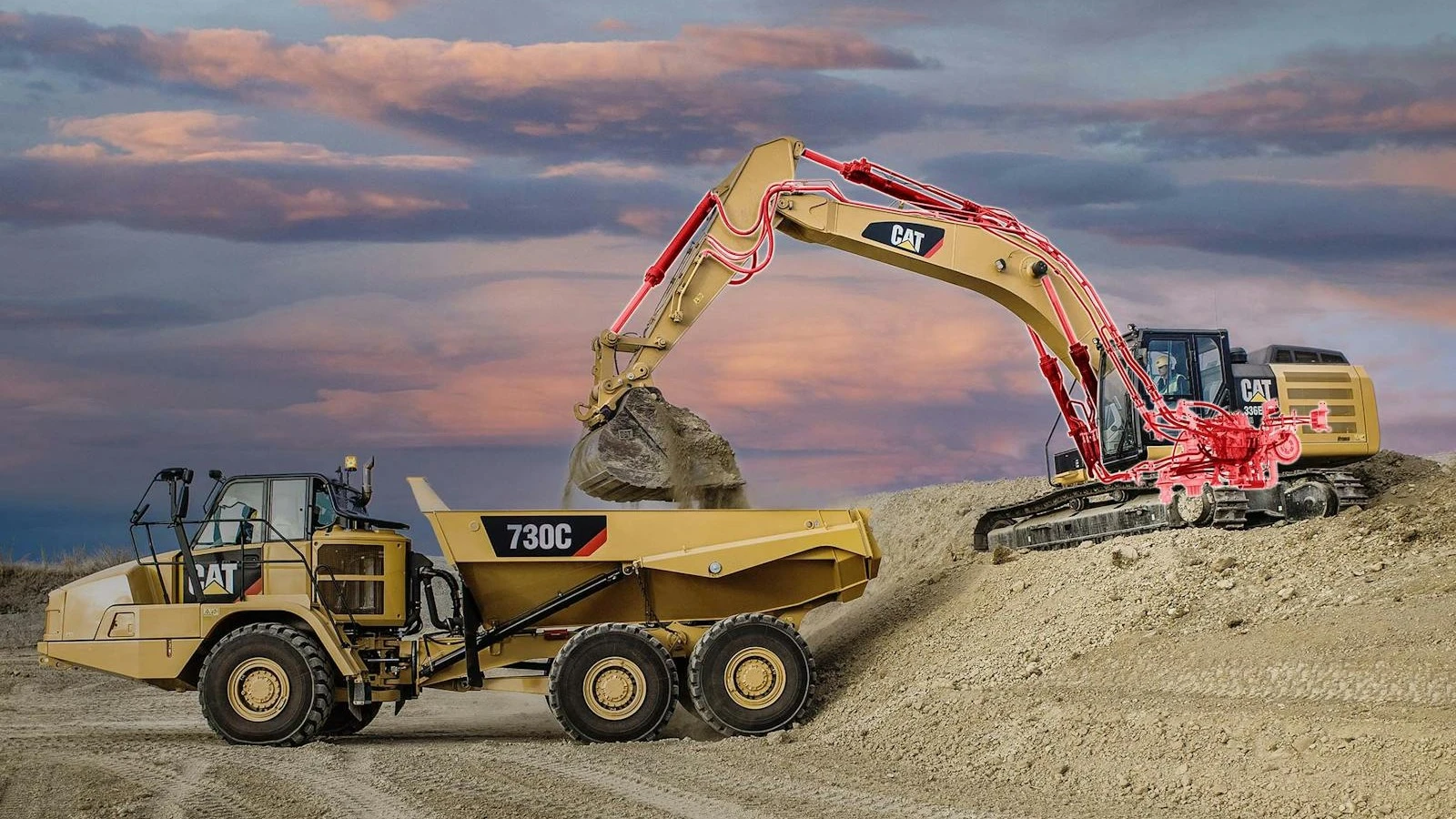Modern hydraulic systems produce more power and have finer control than those of the past due to precision engineering and closer fitting parts. The downside is the increased danger of foreign contaminants damaging machines. Contaminant particles are hard to spot as they can be invisible. A speck of dust you can barely see on your television screen or computer monitor has a diameter of forty microns, making it 40 millionths of a meter. Cat hydraulic systems have clearances of less than thirty microns and even as little as five microns - invisible to the human eye. Particles too small to even see can dramatically affect your system. Contaminant particles can be dust, dirt paint, metal fragments or even cloth fibres, or anything foreign to the hydraulic system. Particles can enter your system in several ways, but the most common by far is by taking a ride in on a cylinder rod. The rod is one of the only sections of a hydraulic system regularly exposed to the outside air. Airborne contaminant particles stick to the rod’s surface while it’s exposed and are carried inside as part of the cycle. Usually, this isn’t an issue, as a series of wiper seals on the end of the cylinder catch particles. If the rod is scratched or dented, contaminants can slip under the seals and enter the system. Once within the system, the particles are no longer airborne, become encased within the hydraulic fluid and float freely. As the cylinder draws the rod back in, pressure forces the particles deeper into the system. Before it enters a sump, for storage while not in use, hydraulic fluid goes through a filter. While filters are highly efficient at trapping and removing contaminates, they will not remove everything in a single pass. Even with a high-efficiency filter, different-sized contaminants will make it through and start wearing down internal parts. Over time, these contaminants cause further damage to valves, pumps, and seals, making them less effective and making it easier for more contaminants to enter. Some particles have sharp edges that scrape against walls and moving parts, breaking off sections which can then cause further problems, a process known as abrasive wear. Repeated stress can also cause fatigue wear, with pieces of metal chipping or breaking off. Gathered particles and jamming valves cause adhesive wear, reducing the system’s overall efficiency. The effects of contamination can be subtle and go unnoticed or unreported for months while your machine slowly and surely becomes less effective. So, what early warning signs might you spot? One is cylinder drift, where a cylinder cannot keep its target extension, either drifting to an extended or retracted position. This happens when a worn seal leaks hydraulic fluid this reduces pressure and causes drift. Jerky or sluggish movements can be a sign of contamination. Contaminated particles can stick to valves in a process known as silting, either collecting in the grooves of the wall or magnetising because of the electromagnetic environment. The build-up can either slow the spool, creating sluggish movements or cause it to hesitate, resulting in jerky motions. Hydraulic contamination can also hit you where it hurts - on your bottom line. Slower moving systems get less work done. Machines can be moving up to 20 per cent slower before an operator notices the difference in cycle times. More contaminants mean more wear, with shorter service intervals and higher operating costs. In a worst-case scenario, catastrophic failure can occur if say a particle completely blocks the movement of a critical valve.

Whitepaper
The Story of Hydraulic Contamination
Modern hydraulic systems produce more power and have finer control than those of the past due to precision engineering and closer fitting parts. The downside is the increased danger of foreign contaminants damaging machines.
JOIN OUR MAILING LIST
Sign up by email to receive promotions, product and event updates, and the latest news from us.
QUESTIONS? GET IN TOUCH
Our team is always standing by to help.
Digital Toolbox
Terra Cat © 2025. All Rights Reserved.
